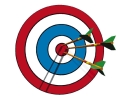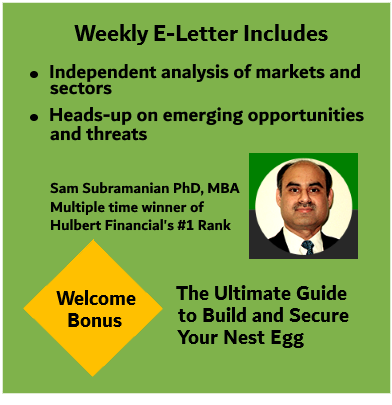Biotechnology, which has been on a roll, declined after the much-anticipated American Society of Clinical Oncologists meeting in early June in New Orleans, where cancer specialists deliberated on the merits of new treatments.
The two extant ETFs which focus on this industry are iShares Nasdaq Biotechnology (AMEX:IBB) and Biotech HOLDRs (AMEX:BBH).
Before deciding to dump or load up on biotech ETFs, investors may find it worthwhile to look at the 3C’s driving this sector: Cancer, Cycle-time, and Consolidation.
Cancer
A hotbed of activity, cancer research has attracted lot of attention. The buzzwords are “targeted drugs”. Unlike traditional forms of cancer treatment which do not discriminate between healthy and malignant cells, targeted drugs act more like smart weapons. They take on the molecular mechanisms involved in the growth of cancer without hurting the surrounding healthy tissue, and offer the possibility of making the disease a manageable, chronic condition.
Tarceva, an experimental drug developed by OSI Pharmaceuticals (Nasdaq:OSIP) and licensed to Genentech (NYSE:DNA) and Roche (ROG.VX) is one of the more highly profiled targeted drugs. The drug shows promise in extending the lives of lung cancer patients when used in combination with Avastin, another cancer drug produced by Genentech. Tarceva’s efficacy against pancreatic cancer is being investigated in a Phase III trial and results are due in the second half of 2004.
ImClone’s (Nasdaq:IMCL) Erbitux, that is already approved for treating colon cancer, is another targeted drug that is in the limelight. According to data presented at the ASCO meeting, head and neck cancer patients treated with Erbitux and radiation had a median survival rate nearly twice as high as those who received radiation alone.
Cycle-time
Thanks to an efficient Food and Drug Administration, the time required for FDA review has shortened. With priority review having been granted by the FDA to Gilead Sciences’ (Nasdaq:GILD) Viread/Emtriva combination anti-HIV pill, a decision is now expected in September, four months earlier than the originally expected January 2005.

Biotech ETFs, Biotech HOLDRs (BBH) and iShares Nasdaq Biotechnology (IBB), have performed quite differently in the past two years. BBH is up almost 70% compared to IBB’s 42% gain.
Companies for their part are also aggressive in reducing cycle-time. Genentech, for example, was ready to launch Avastin literally within hours of getting FDA approval. Helped by favorable test results, Elan (NYSE:ELN) and Biogen Idec (Nasdaq:BIIB) have filed for their multiple sclerosis drug, Antegren, a year earlier than expected.
Consolidation
The organic growth of biotechnology companies has proven to be a long and uncertain process. While biotechnology firms seek to merge among themselves, pharmaceutical companies are also targeting biotechnology companies.
Last year Biogen and Idec merged to form Biogen Idec. The Biogen-Idec merger was driven by the need to reduce risks, derive advantages of scale, and enhance domain expertise. This year, Amgen (Nadsaq:AMGN) has announced its intent to buy 79% of Tularik (Nasdaq:TLRK) it does not already own. Tularik shores up Amgen’s pipeline by bringing in five products in various stages of clinical testing with T67, the liver cancer drug, in Phase III trials. Recently, QLT (Nasdaq:QLTI) and Atrix (Nasdaq ATRX) have agreed to merge, moving closer to becoming a fully integrated biopharmaceutical company.
Major pharmaceutical firms, faced with the double whammy of weak drug development pipelines and upcoming patent expirations, are looking to purchase biotech firms in order to rev up their growth engines. Recently, Belgium-based UCB (UCBBt.BR) has offered to buy U.K.’s largest biotech firm, Celltech (NYSE:CLL).
The potential of targeted drugs, shortening of cycle-times, and possibilities of buyout provide a powerful case for investing in the biotechnology sector. So how does one play the biotech cycle?
Investing in biotech stocks has never been for the faint-hearted. News from clinical trials can make or break a company’s share price. One needs to only look at the ‘Slim-Jim’ type one-day moves to the upside and downside in OSI Pharmaceuticals and Genta (Nasdaq:GNTA), respectively, to get the picture.
This sector has been on a roll ever since Genentech vaulted 45% on May 19, 2003 following positive news from Phase III trials of Avastin in colorectal cancer patients. However, many biotech companies have high cash burn rates. Even the profitable ones have relatively few marketed products. For companies in this universe, the value is predicated on cash flows that are forecasted to come through several years out. As such, it makes sense to invest in a basket of biotech companies rather than one single entity.
The two ETFs that focus on the biotech industry, IBB and BBH, have subtle yet important, differences. From April 30, 2003 through June 16, 2004, the IBB has advanced 29% compared to the 39% gain for the BBH.
The iShares fund is designed to track the Nasdaq Biotechnology Index and includes over 100 biotech companies that trade on the Nasdaq. As of March 31, 2004, the top 10 holdings in IBB had a combined weighting of about 37%, with Amgen by itself having a 17% weighting. A notable absentee in IBB is Genentech, whose shares trade on the NYSE.
The Biotech HOLDRS, on the other hand, are Depositary Receipts that represent an undivided beneficial ownership in the common stock of 18 biotech companies. This ETF is concentrated: as of June 10, 2004, the top 5 industry heavyweights, Amgen, Genentech, Biogen Idec, Gilead Sciences, and Chiron (Nasdaq:CHIR), had a combined weighting of about 79%. One twist of BBH is that it has to be traded in round lots of 100 shares; one lot, at about $140 per share, takes a cool $14,000.
While bottoms are hard to pick, there is a case to be made for going long with this sector. Between the two available ETFs, the iShares fund offers better diversification and has higher exposure to development-stage companies. Some of the development-stage companies have appeal as takeover candidates, whereas the industry leaders in the HOLDRS fund are more likely to be buyers than sellers. IBB has lagged behind BBH, partly because of the lack of exposure to high-flying Genentech shares that trade at a 50 forward P/E. This could actually become an advantage for IBB if Genentech shares were to lag other firms.
This article originally appeared in ETFZone.com.

 Sick buying high & selling low? Fed up of the fees you pay? Tired researching investments? End your financial pain now. You have the opportunity to
Sick buying high & selling low? Fed up of the fees you pay? Tired researching investments? End your financial pain now. You have the opportunity to 

 DEC. 1993 to DEC. 2023
DEC. 1993 to DEC. 2023





